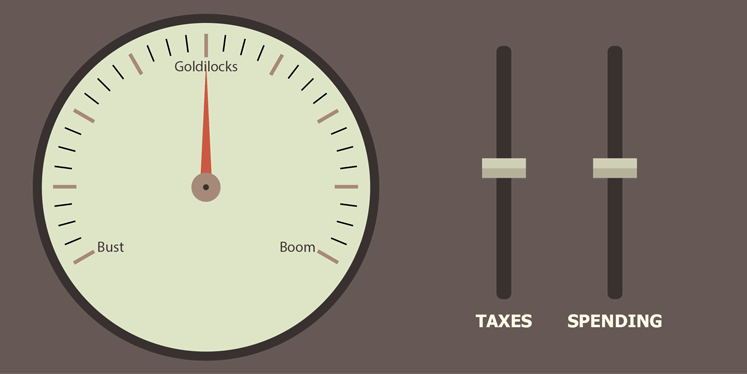Business Cycle
A Business Cycle represents the cyclical nature of economic expansions and contractions as measured by GDP (Gross Domestic Product) over time. As shown by the following diagram, the repetitive phases of a Business cycle are Contraction, Trough, Expansion, and Peak.
Contractions represent economic slumps, recessions, or depressions. During contractions, GDP decreases caused by or correlated with other economic conditions, including an unemployment increase, personal income decrease, interest rate decrease, dollar demand/value decrease, export increase. In summary:
↑ unemployment, ↓ personal income, ↓ GDP, ↓ interest rates, ↓ dollar demand & value, ↑ exports
During contractions, defensive assets typically outperform The Market. Defensive assets include:
Food (but not restaurants)
Clothing (but not designer)
Pharmaceuticals
Healthcare
Alcohol & Tobacco
A Trough represents the bottoming out of a Contraction, and a Trough is followed by an Expansion, which is an economic boom. During expansions, GDP increases, and cyclical assets typically outperform The Market. Cyclical assets include:
Heavy Equipment
Steel
Auto Manufacturing
Durable goods (big ticket items like refrigerators)
Travel
Aerospace
Before GDP starts to decrease again, a Peak represents the top of an Expansion. The time from one peak to the next, or one trough to the next, is considered one business cycle. Eleven cycles took place between 1945 and 2009, and the average cycle lasted about five and a half years.
INDICATORS
Business Cycle Indicators potentially predict or confirm business cycle phases. A Leading Indicator occurs before the economy begins to start another phase. A Lagging Indicator occurs after the economy has already begun to form another phase. The following summary lists Leading and Lagging Indicators.
LEADING
Unemployment Claims – Average number of initial applications for unemployment insurance
Manufacturing Hours – Average weekly hours worked by manufacturing workers
Manufacturing New Orders – Amount of manufactures’ new orders for customer goods & materials
Equipment/Capital Goods New Orders – Amount of new orders for capital goods unrelated to defense
Speed of Delivery – Speed of delivery of new merchandise from suppliers to vendors
Building Permits – Amount of new building permits for residential buildings
S&P 500 Index
Monetary Supply – Inflation-adjusted monetary supply (M2)
Long-short Rate Spread – Spread between long & short interest rates
Consumer Confidence
Bond Yields – bond yields are leading but prime rate is lagging (see below)
LAGGING
Unemployment Duration
Corporate Profits
Inventory
Outstanding Credit
Commercial – Value of outstanding commercial loans
Personal – Ratio of consumer credit outstanding to personal income
CPI – Change in CPI for services from pervious month
Labor Cost per Output – Change in labor cost per unit of labor output
Prime Rate
My Take
In Being There (1979), Benjamin Rand said, "...we welcome the inevitable seasons of nature, but we’re upset by the seasons of our economy." Although the cyclical nature of the economy is inevitable, Dollar-cost Averaging can smooth out the financial bumps of business cycles.







